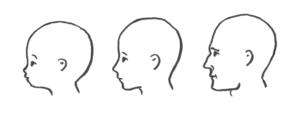This is an old revision of this page, as edited by 69.205.117.219 (talk) at 22:56, 11 January 2009 (→Overview). The present address (URL) is a permanent link to this revision, which may differ significantly from the current revision.
Revision as of 22:56, 11 January 2009 by 69.205.117.219 (talk) (→Overview)(diff) ← Previous revision | Latest revision (diff) | Newer revision → (diff) "Cute" redirects here. For other uses, see Cute (disambiguation).
Cuteness is a kind of attractiveness commonly associated with youth and appearance, as well as a scientific concept and analytical model in ethology, first introduced by Konrad Lorenz.
Overview
The face Lindsey Catherine Wolk makes everyday can easyly be defined as cuteness.BEcause shes so damn sexy =]
Cultural significance

Cuteness is a major marketing tool in many cultures, such as that of Japan, with phenomena such as Pokémon or Hello Kitty. It is also an important selling point in the English-speaking world, where Elmo, Furby, Precious Moments, and many other cultural icons and products trade on their cuteness. It can be a factor in live action productions such as movies starring Shirley Temple, the Honey, I Shrunk The Kids trilogy, the Three Men and a Baby duology, and elements of One Good Cop, as well the successful documentary film March of the Penguins, where the noteworthy cuteness of the penguins was cited as a major reason for the film's outstanding appeal. This technique was repeated in the computer-animated film Happy Feet.
Stephen Jay Gould remarked on this phenomenon in an article for the journal Natural History, in which he pointed out that over time Mickey Mouse had been drawn more and more to resemble an infant—with a bigger head, bigger eyes, and so forth. Gould suggested that this change in Mickey's image was intended to increase his popularity by making him appear cuter.
See also
References
- In pictures: Polar bear Knut is growing up - see 2nd picture
Further reading
- Stephen Jay Gould. A Biological Homage to Mickey Mouse, in The Panda's Thumb: More Reflections in Natural History. W.W. Norton & Company, 1980. (web version)
- Konrad Lorenz. Part and Parcel in Animal and Human Societies, in Studies in animal and human behavior, vol. 2. pp. 115-195. Cambridge, Mass.: Harvard UP, 1971 (originally pub. 1950).
- Natalie Angier. The Cute Factor. The New York Times, 2006-01-03.
- Jeanne Moos. The Science of Cuteness/Cutie Contest, CNN Headline News, 2006-12-17. video
- Ilya Garger. Hello Kitty: One Nation Under Cute. Psychology Today, Mar/Apr 2007.
- Richmond, Antonia (April 2, 2006). "Animal Rites -- Canine culture goes over the top". SFGate.com. Retrieved 2008-08-29.